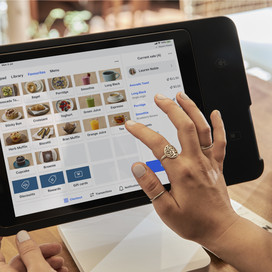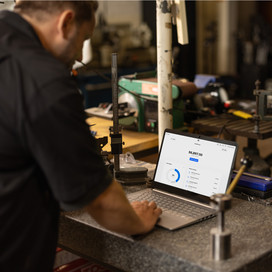Table of contents
When you first open a restaurant, daily tasks can take up so much attention that it can be easy to forget to step back and think about whether it might actually be a good time to expand.
Restaurant owners scale their footprint for good reason: Growing can help you reach more customers, maximise your revenue potential, and diversify your risk in the market. It’s important to approach the opportunity to grow at the right time and make informed decisions during the process to avoid jeopardising your restaurant, however.
For Sydney-based, deli-inspired bagel store Lox In A Box co-founder Candy Berger, it was about knowing when to act. “It started as one store, and we didn’t know that it was going to be multiple stores, but we felt that our brand was strong enough to open another store. Customers were coming to the Bondi store and saying, I wish you guys would open here, I wish you would open there.”
So, how do you know when it’s time to grow your business and open another restaurant? Here are five indicators.
1. You can’t keep up with demand
The decision to expand should never be prompted by a desire to stick to an arbitrary growth plan when you don’t have any real justification for doing so. Before you even consider expanding, ask yourself if there’s a need. Do you have more orders than your staff and facilities can handle? Can you accommodate the number of customers that you’re attracting?
If your numbers warrant growth, that’s the first step. Your restaurant technology can be a great place to get an accurate pulse on this information. The Square Kitchen Display System (KDS), for instance, tracks order wait times, and Square Point of Sale data logs live sales counts.
2. You have a solid team in place
A strong team of employees is essential when you’re considering expanding. If you’re planning to open new locations, you’re going to be spending a good deal of time getting things up and running in those areas, so you need to have people you trust to hold down the fort.
A strong team and sense of community are a big part of Lox In A Box’s success, explains Berger. “The people working for us are fun, friendly, warm and inviting, and it has always been like a place that you can come and just feel a little bit free. We dance, and we sing, and we shout orders out to people.”
If you don’t have confidence in your team, make some changes and key hires before moving forward. Also, ask yourself if you need to hire more employees. Before you expand, you’ll want a competent, well-trained team ready to go.
3. You have enough cash
Expansion takes money. So, even if you have a tonne of orders, you’re not in a position to grow unless you’re actually getting paid enough capital. Only when you have strong, positive cash flow should you consider taking the next step.
After steady growth at their Sydney store, Min Chai and Eddie Stewart, co-founders of Tokyo Lamington, set their sights on a second store in Melbourne and decided to seek out financing to help them.
Chai remembers, “We explored loans from the banks, but the process was very lengthy. Post-COVID, banks were nervous about doing business loans. We went to a broker, a bank, but it became too hard. We thought, ‘Why don’t we give Square Loans a go.’”
“All we had to do was get a few documents, there was two or three days of back and forth and we got approved,” adds Stewart. “That’s what appealed to us, the convenience of it.”
4. You’re running out of space
Whether you’re working in a restaurant, a manufacturing facility, or a commercial kitchen, you need enough room to operate comfortably. And if the number of customers visiting your business has spiked or you’ve increased staff but are still in the same space, everyone is going to get frustrated. Don’t be hasty about leasing a larger space or opening a new location. First, make sure that your growth is consistent and not just a seasonal spike. Also, don’t get ahead of yourself. Expand gradually to avoid investing in a space that’s too large or expensive for your business to sustain.
5. There’s a demand for more products and services
If you’ve created a restaurant that has taken off, think about variations you could make. Your customers’ input can seriously help here. If they’re consistently asking for something you don’t offer, or if they have an interesting idea for a new flavour or product, it might be something worth pursuing.
For Black Market Coffee, this meant moving into roasting their own coffee beans for their two cafes (one in Sydney’s inner west and another in Thirroul in Wollongong) and eventually wholesaling them. Later, expanding their offering again to train people interested in working in hospitality.
“I guess we’ve just become more and more passionate about it as we’ve been doing it [roasting], but it’s a bit of a natural transition for us going from cafes to roasting and then to training,” says Jessica Hol, co-founder of Black Market Coffee.
Reference your restaurant data to know when to grow
One of the biggest barriers to expanding to another location can be the costs involved in the process. Owners know the restaurant industry’s margins are razor-thin. After weighing your opportunity to expand, logging your costs using an expense tracking tool can set you up on a path to success.
Your existing business data can also be a huge help in making sure you grow the right way. For the owners of Fishbowl — which makes made-to-order salad bowls with an Asian twist and scaled from one store to thirty — the Square Point of Sale and real-time reporting are central to this.
“From a behind-the-scenes standpoint, it’s really been a saviour in terms of how the stores are going,” says Nathan Dalah, co-owner of Fishbowl. “You know, you can’t be everywhere at once, but we can just go on our phones and we can see performance across thirty locations.
“We know which products are working and not working in real-time,” Dalah says. “I can see how sales are tracking minute-by-minute, hour-by-hour, week-on-week, month-on-month or year-on-year. It allows us to scale with the same attention to detail that we could have when we had one store.”
![]()












